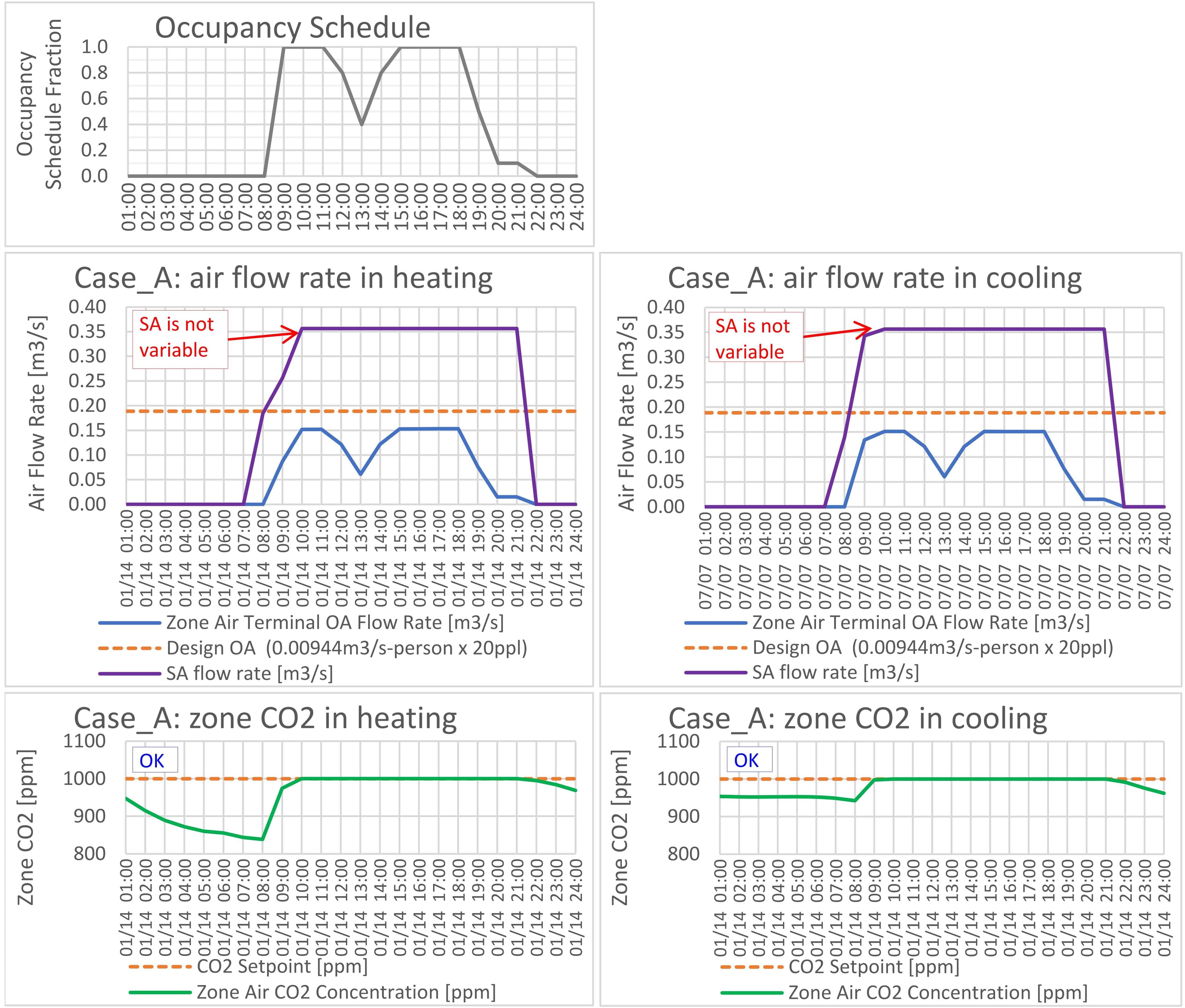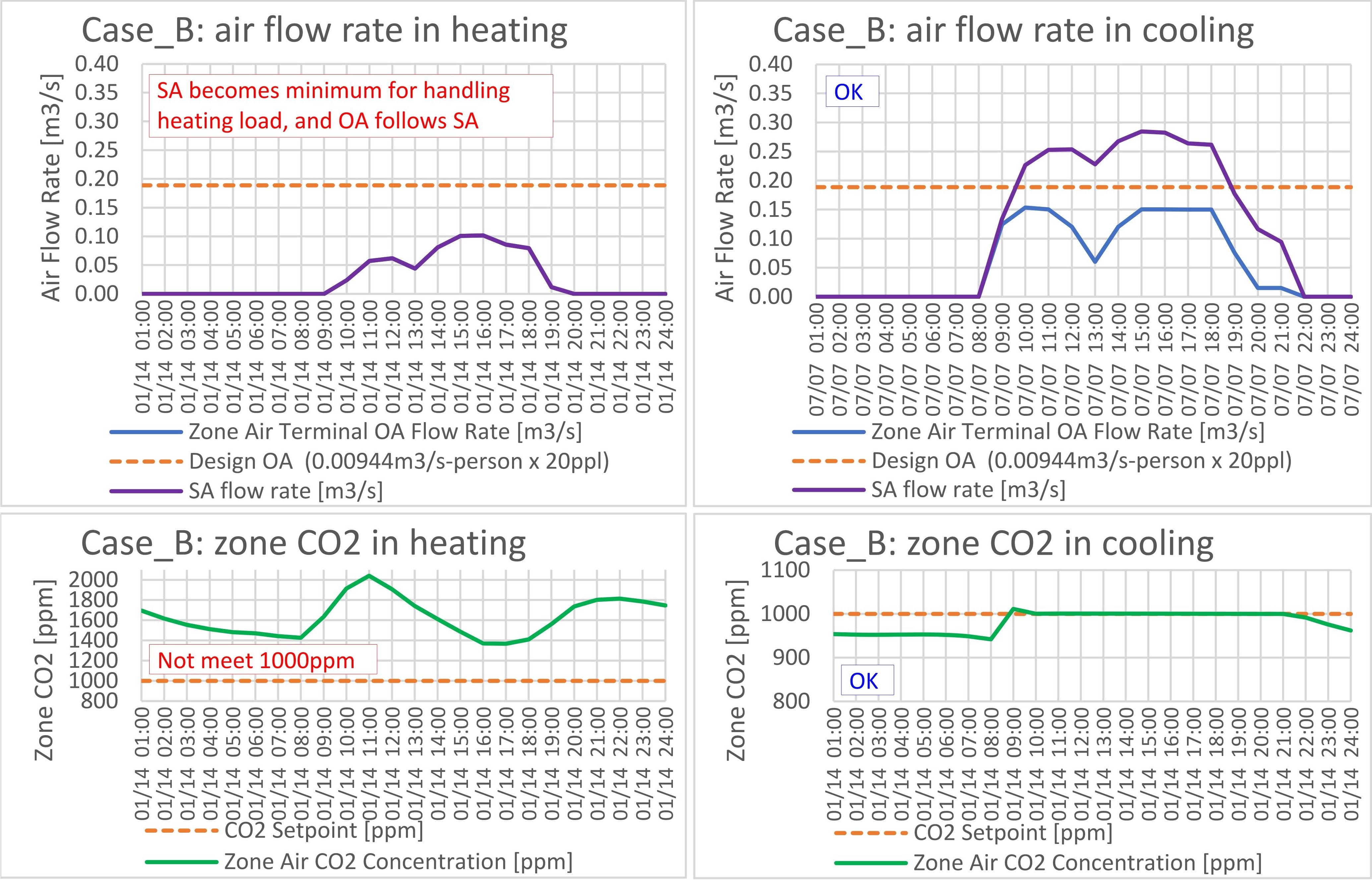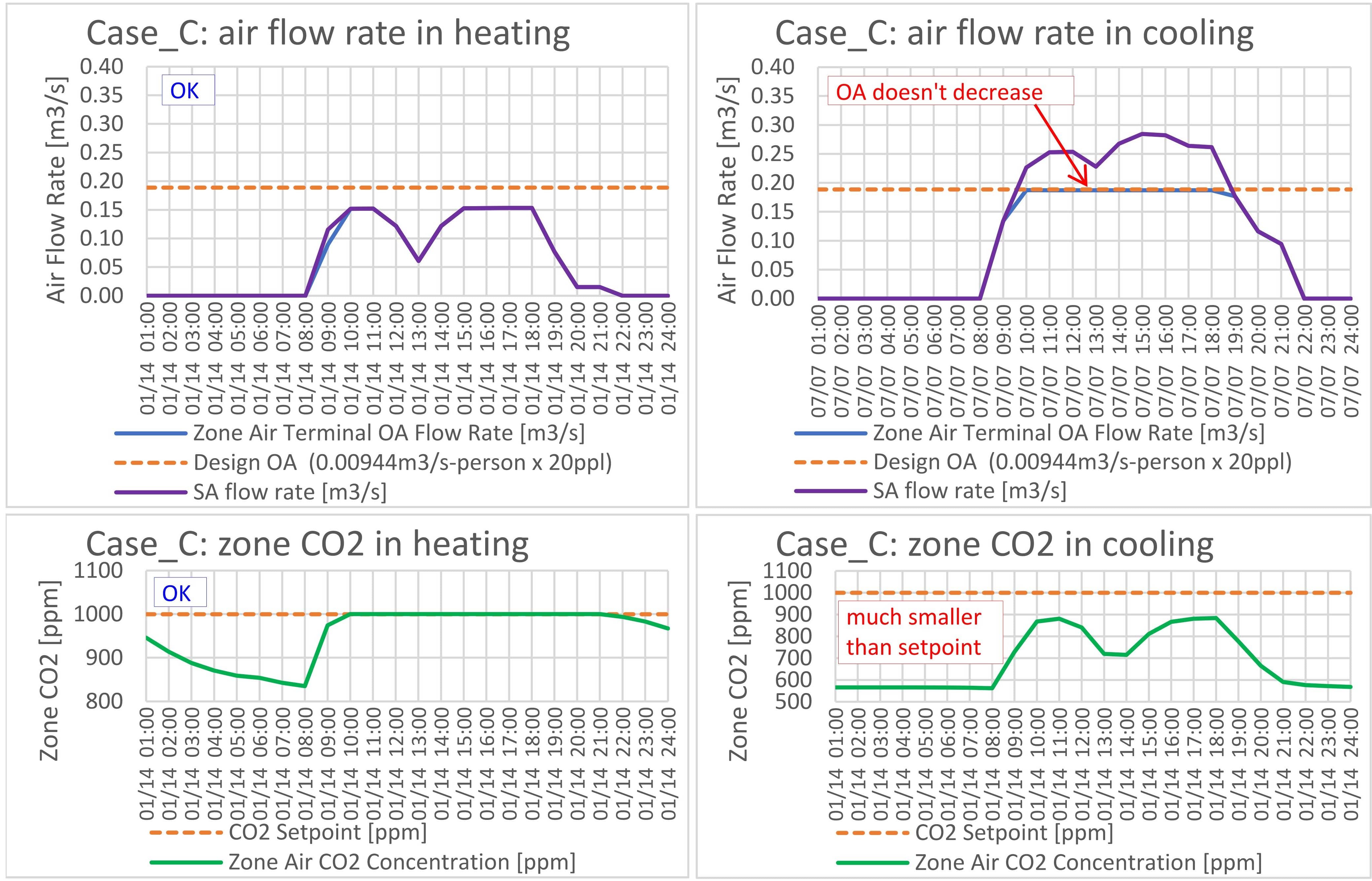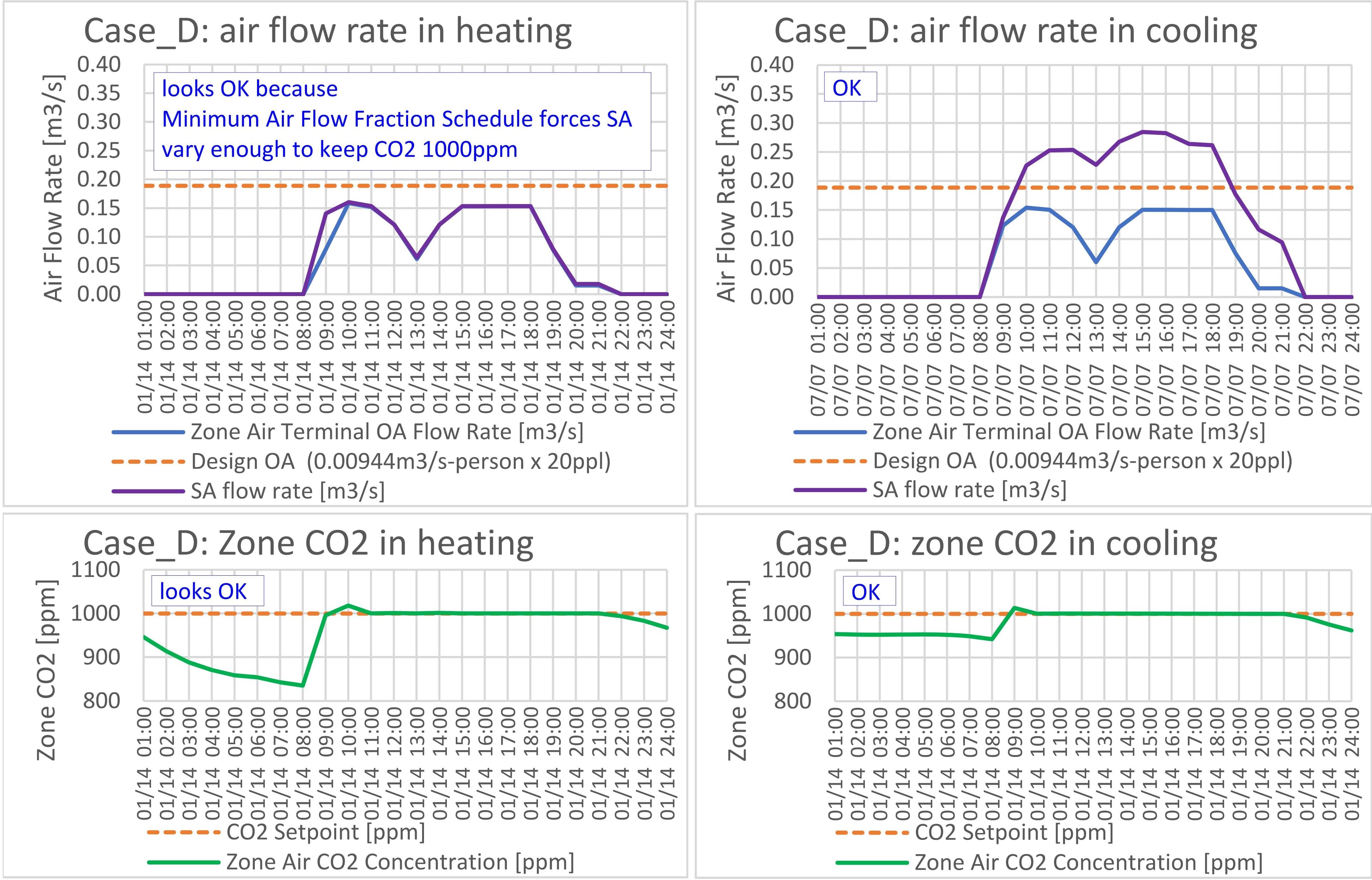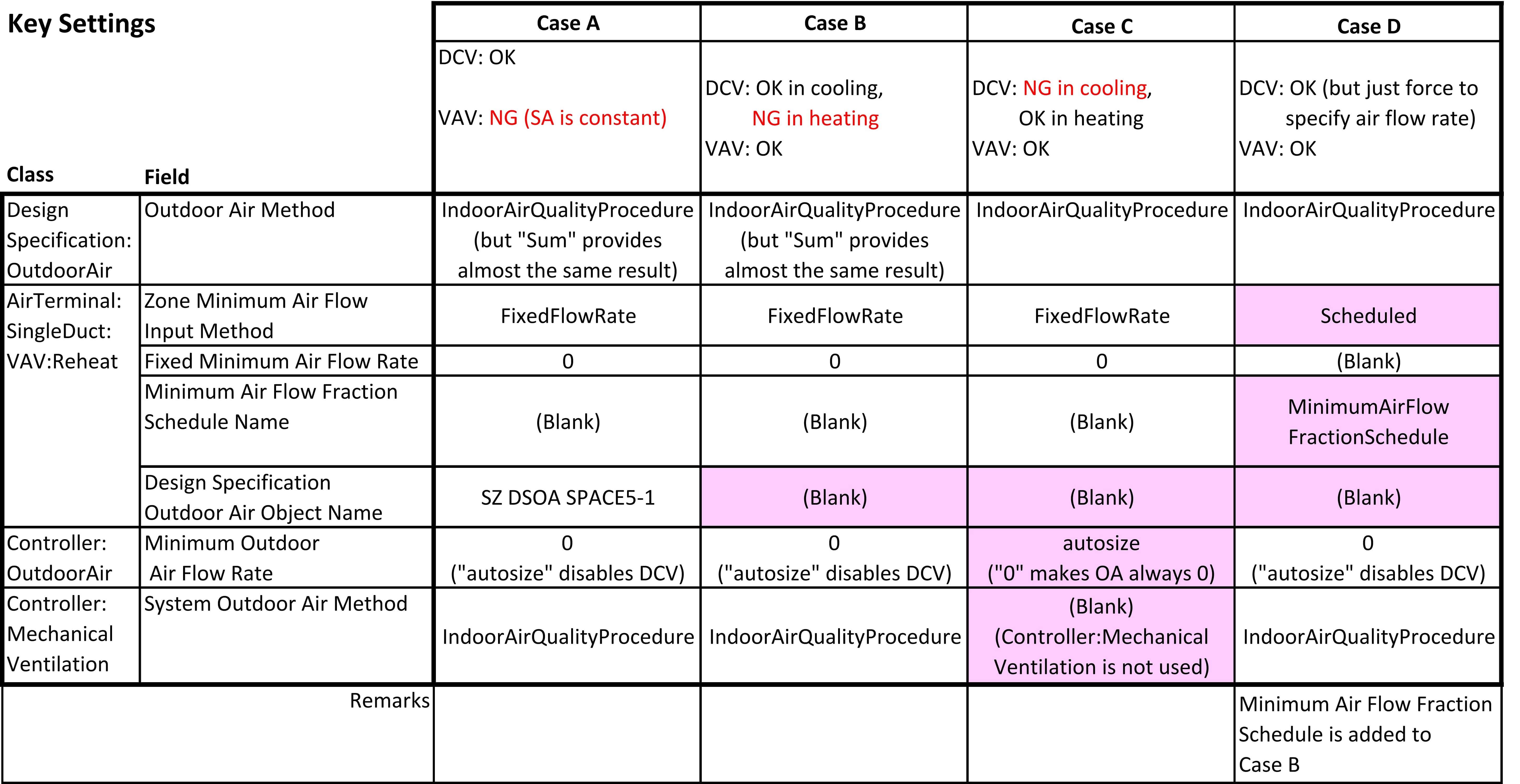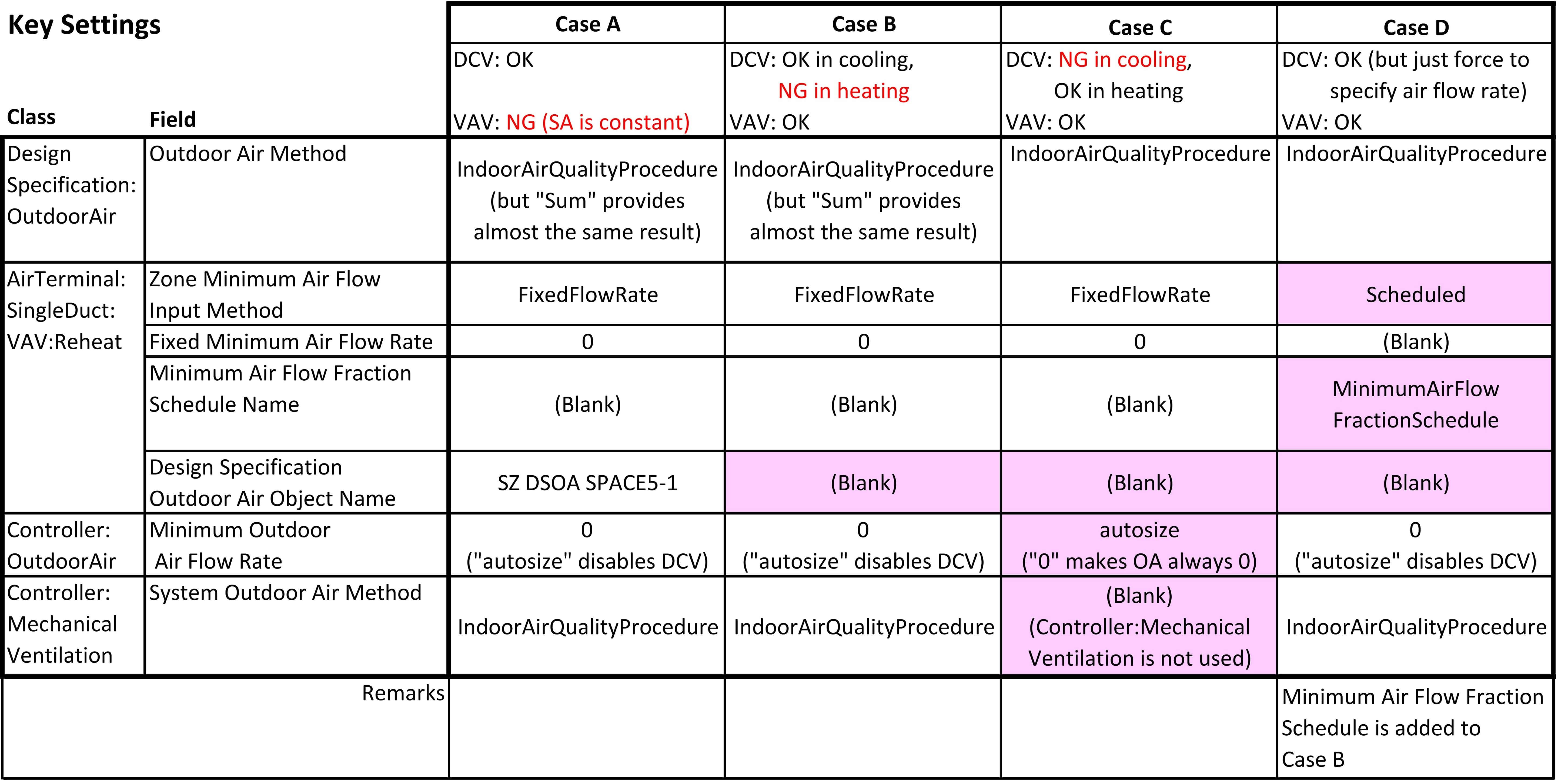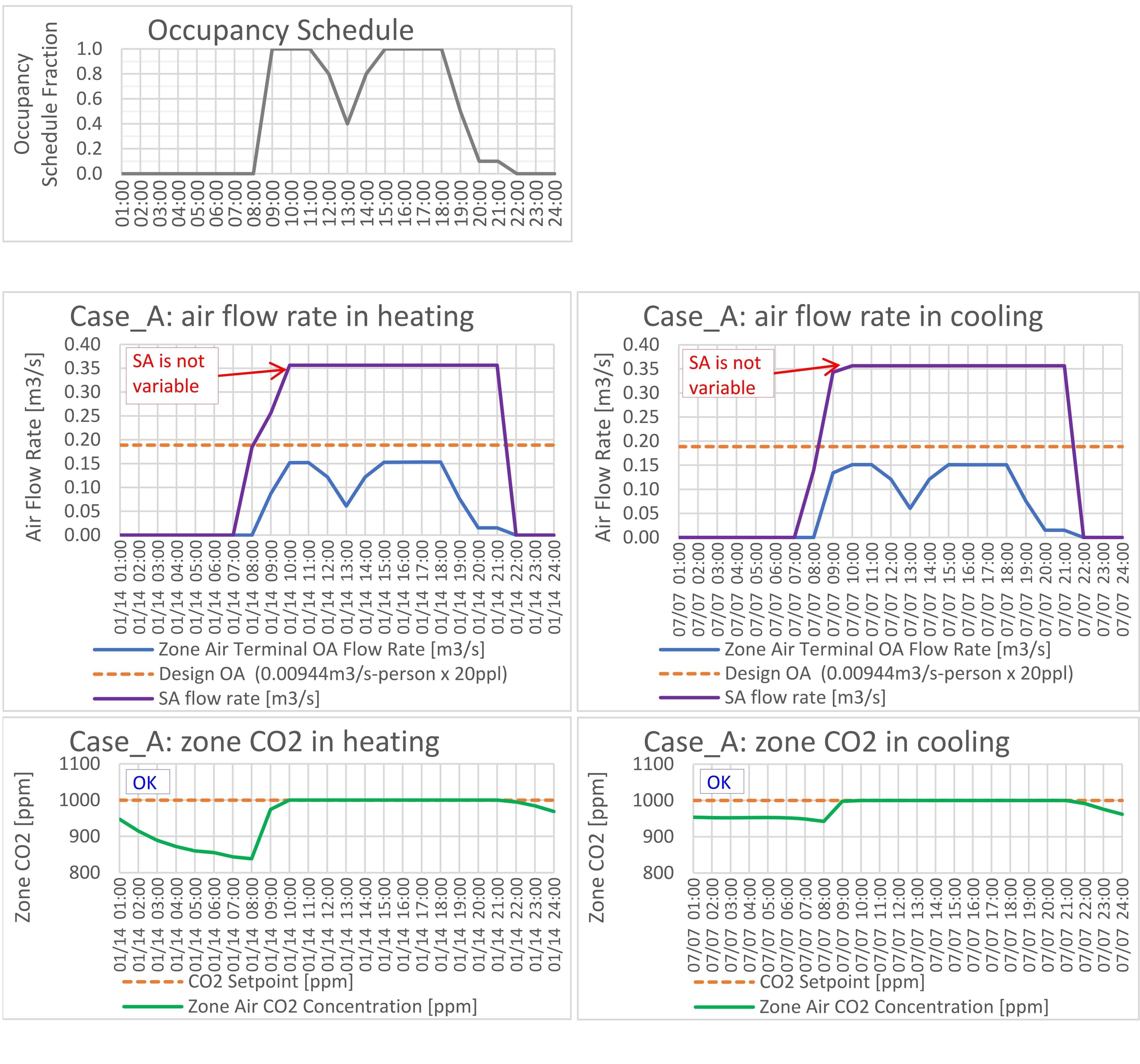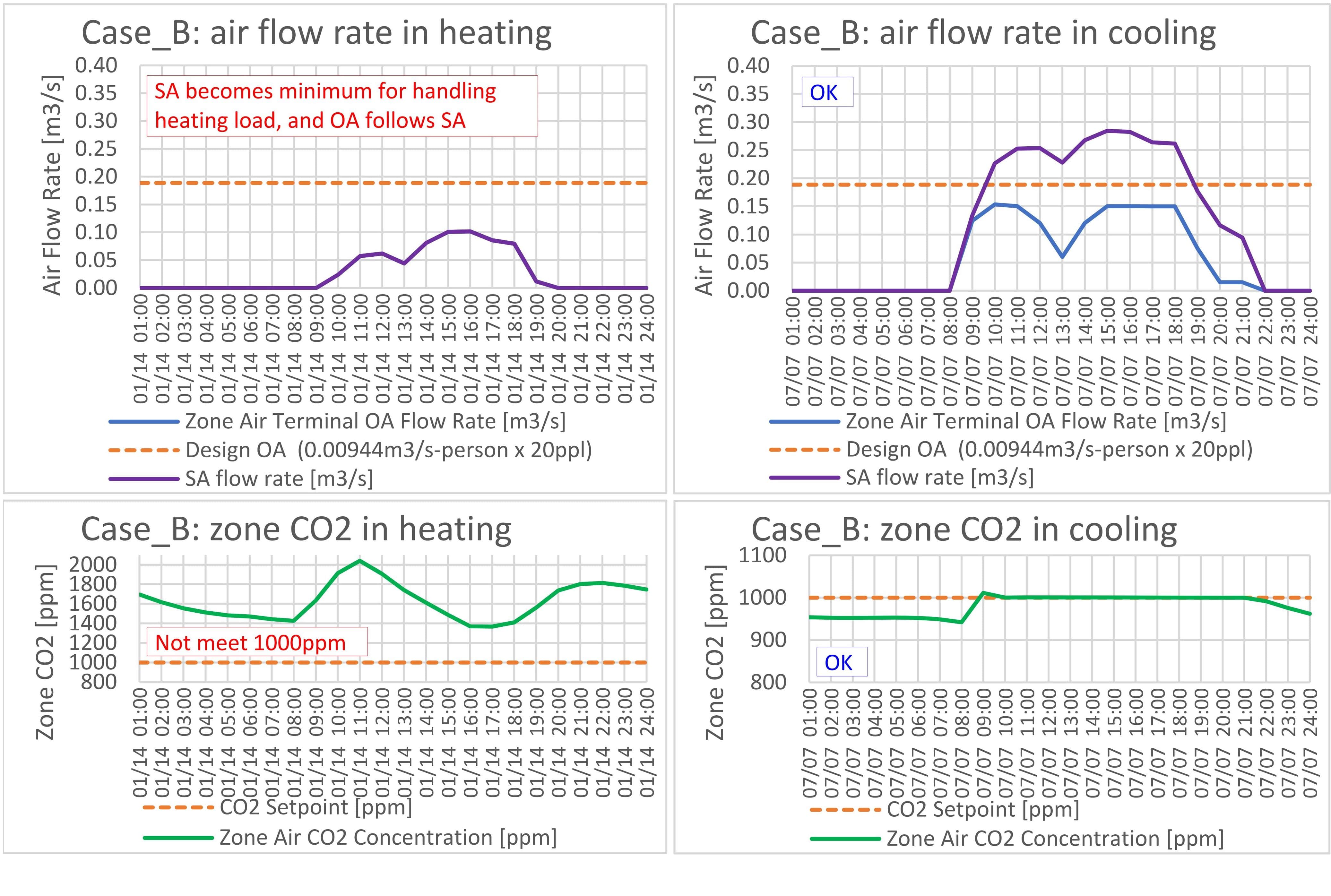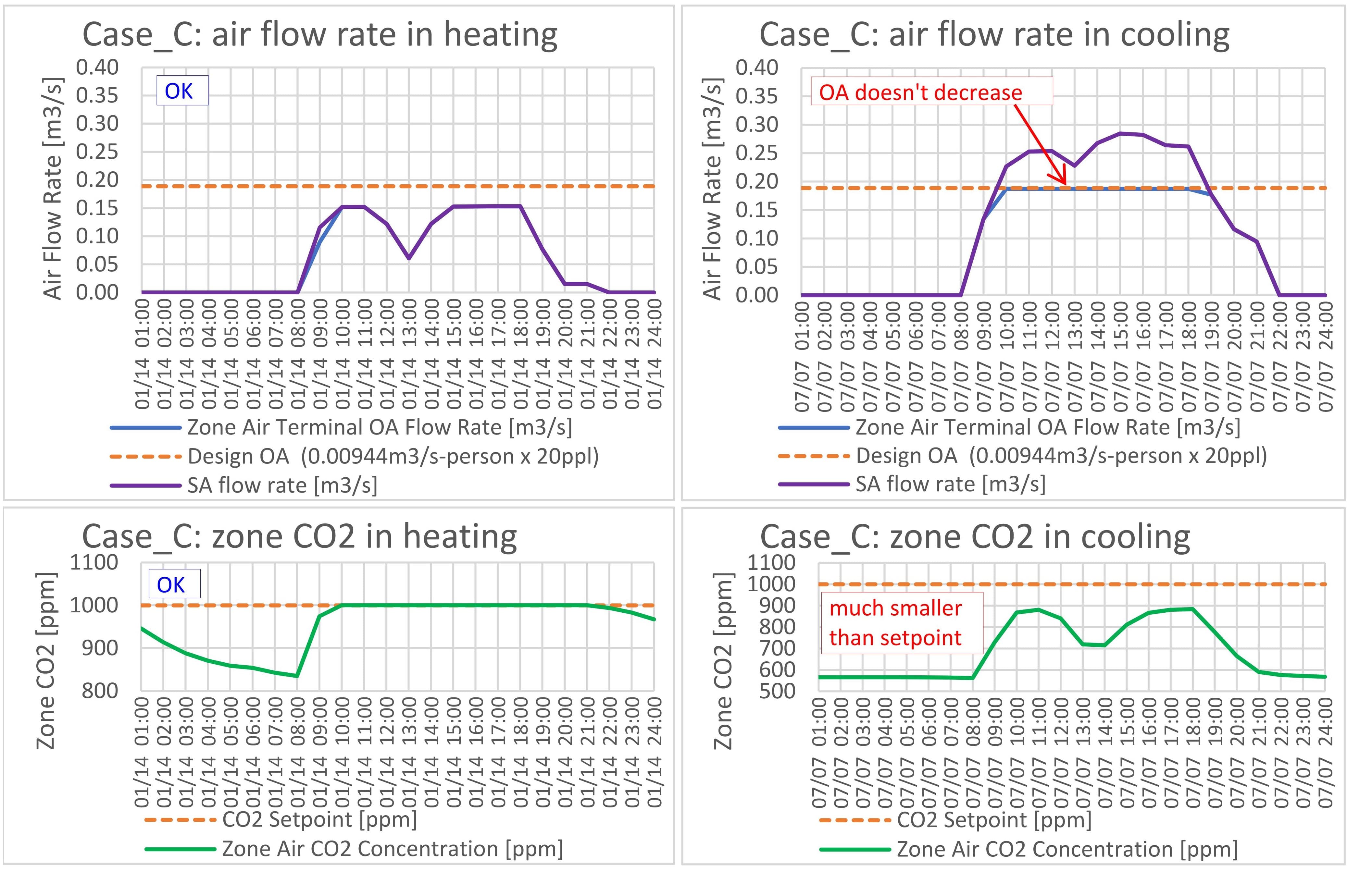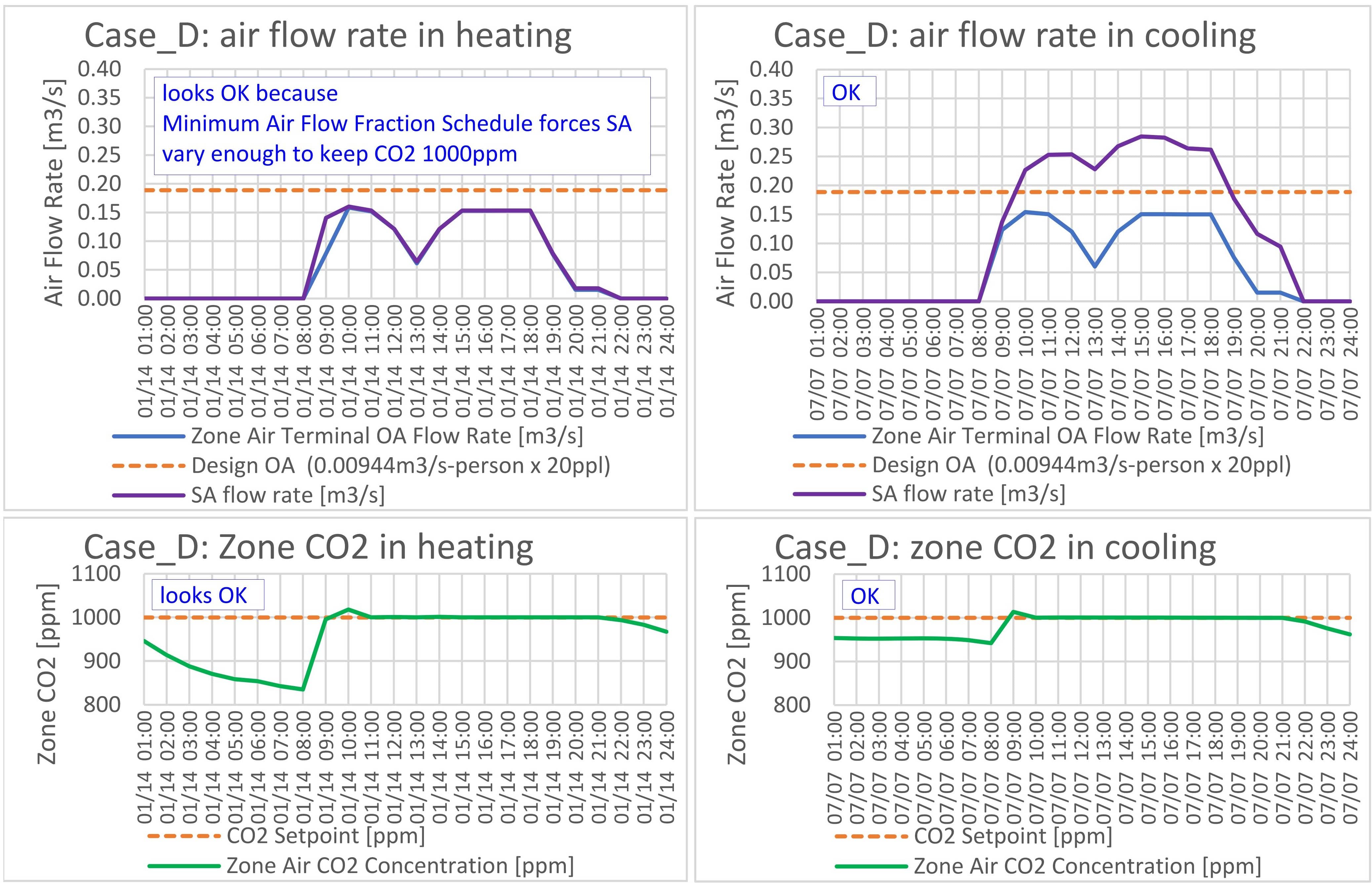Has anyone been able to successfully implement CO2 based DCV in a VAV system, both in heating and cooling? I'm trying to model it with a simple single-zone, but I can't find the perfect settings. Any advice would be appreciated.
Here are IDF files (v9.4.0). Now I have 4 cases with different settings. The table below shows the setting differences for each case. Common settings are omitted in the table. Of course I set other classes that are necessary for DCV such as ZoneAirContaminantBalance and ZoneControl:ContaminantController.
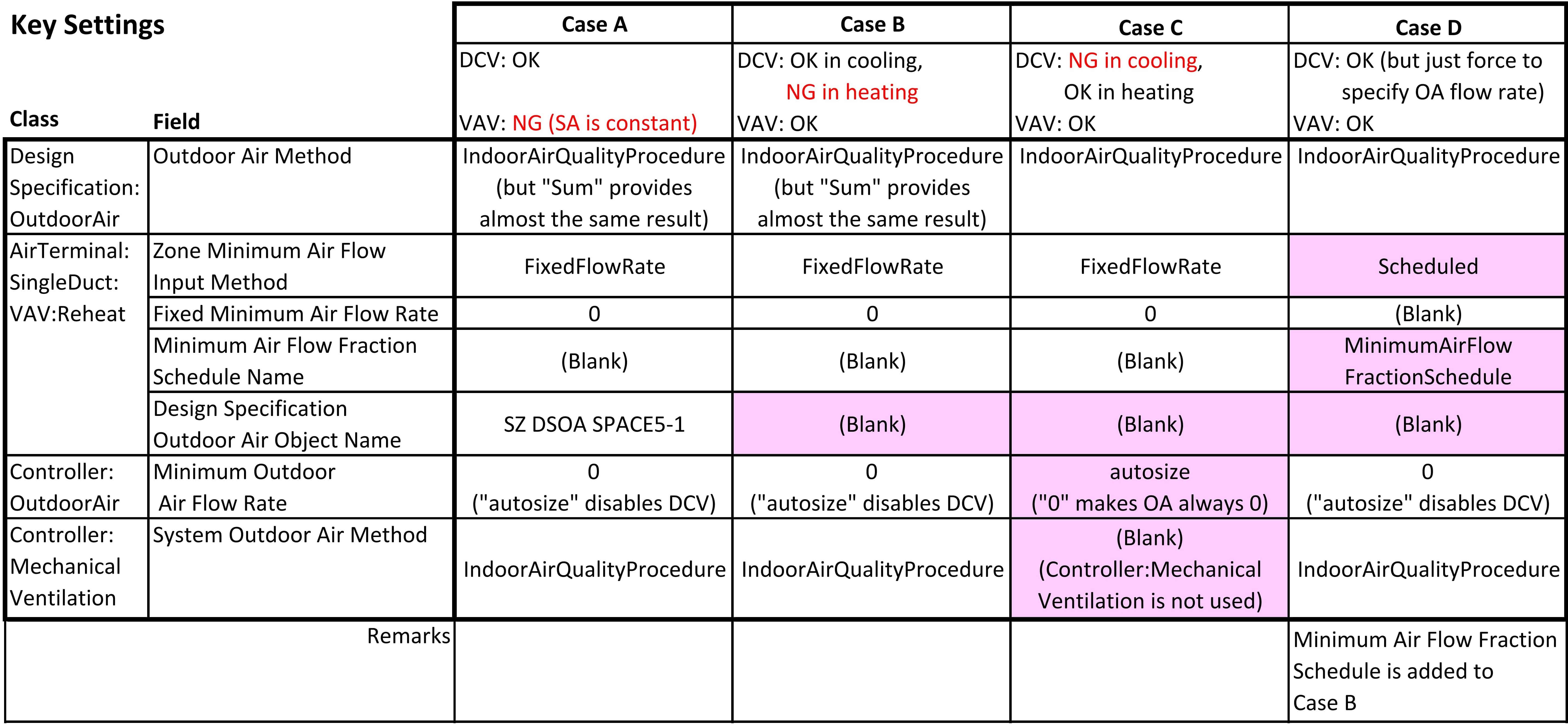
Case_A: I modelled it first, but the supply air (SA) flow rate was not variable. It's similar to this post.
Case_B: After much trial and error, I found that blank Design Specification Outdoor Air Object Name in AirTerminal:SingleDuct:VAV:Reheat made SA flow rate variable, but instead, DCV became ineffective when heating.
Case_C: When I removed Controller:MechanicalVentilation, DCV in winter was OK, but this time DCV was no longer working when cooling.
Case_D: I don't think it's the best setting, but it's the best I can do at the moment. DCV of Case_B in summer is OK, and the occupancy schedule of summer and winter is the same. So, I manually calculated the hourly OA fractions (= OA/Maximum SA) in one day that keep CO2 consentration to the setpoint(1000ppm) from the result of Case_B in summer. Then, I made the following schedule and put it into Minimum Air Flow Fraction Schedule Name in AirTerminal:SingleDuct:VAV:Reheat. The result looks OK at a glance, but it just forces SA and OA to vary enough to keep zone CO2 concentration 1000ppm. It is "pretended" correctness.
Schedule:Compact,
MinimumAirFlowFractionSchedule, !- Name
Fraction, !- Schedule Type Limits Name
Through: 12/31, !- Field 1
For: AllDays, !- Field 2
Until: 8:00, 0, !- Field 4
Until: 9:00, .35, !- Field 6
Until: 10:00, .45, !- Field 8
Until: 11:00, .43, !- Field 10
Until: 12:00, .34, !- Field 12
Until: 13:00, .18, !- Field 14
Until: 14:00, .34, !- Field 16
Until: 18:00, .43, !- Field 18
Until: 19:00, .22, !- Field 20
Until: 21:00, .05, !- Field 22
Until: 24:00, 0; !- Field 24
The charts below are the simulation results of all cases.
